Speed Checker Check-In
Tags: mini4wd tamiya repair
Mini4WD cars have a lot of accessories available for them, but my favourite is this, the Speed Checker. It’s a little pocket dynamometer, so you can take your 1/24-scale toy cars to the dyno and see just how fast they are without all the confusion of a track.
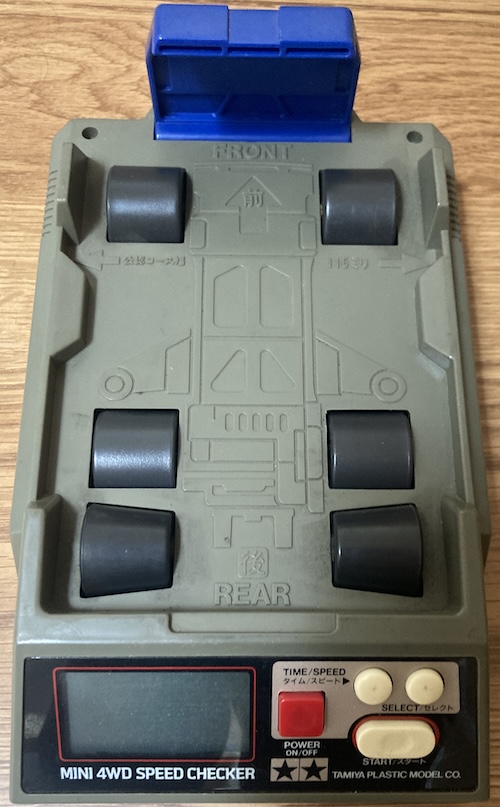
This one was advertised as “not working,” and they were correct about that. When I put in some batteries, it didn’t turn on. When I wiggled the batteries while mashing the power switch, I could get it to turn on, but glitchily.
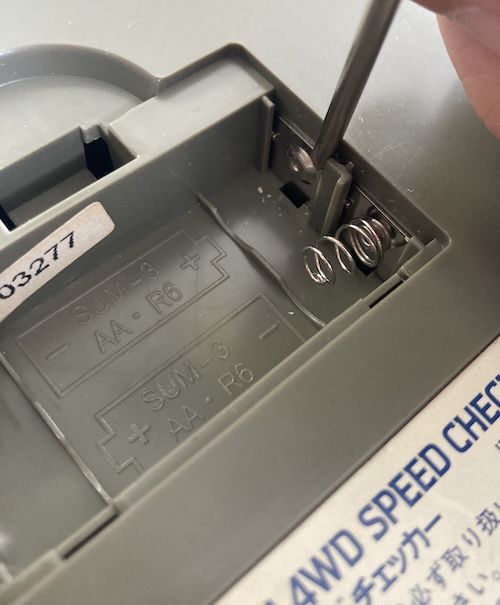
My hypothesis? Bad battery contact, which is probably due to battery leakage corroding the battery terminals. I scraped off some dull-looking residue from the positive terminal of the Speed Checker, and was able to get it to be more reliable.
Now that it works, it’s time to find out just how slow a stock Cat Racer is.
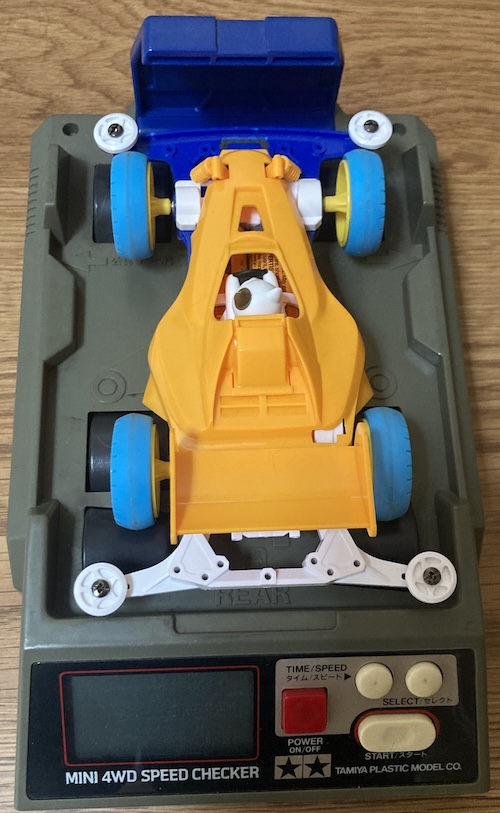
I thought I would have to hold the car down more in order to get a good test out of it, but it seems happy to run on its own. That would likely not be the case if I had a much faster car, especially if it were something idiotic and brushless.
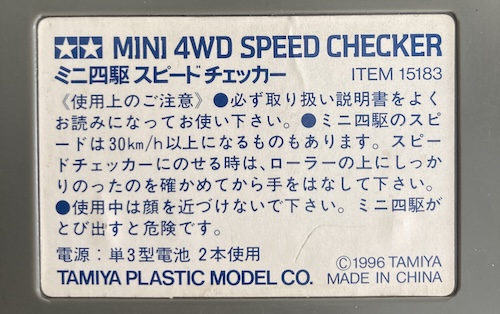
The sticker on the backside of this 1996-era Speed Checker indicates that “some cars” can run in excess of 30km/h and you need to be extra careful for those. Tamiya has a sort of nervousness around kids getting hit in the face by flying cars, what with the Beak Spider injury lawsuit and all.

I don’t think I need to worry about that just yet. Yup, the Cat Racer is slow.
Open it up
I was curious what the Speed Checker had inside for electronics. My hope was that I would somehow find a socketed ROM that I could dump.
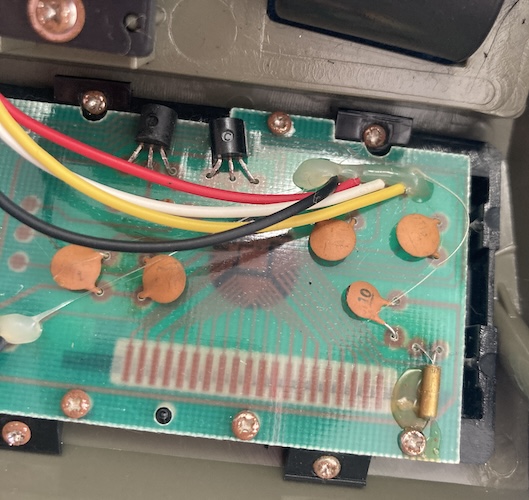
Unfortunately, it seems to be a glob-top microcontroller. The ROM is in mask on this microcontroller, which integrates the LCD driver. For cost reasons, this makes a lot of sense. Tamiya isn’t going to go around, making whole general-purpose computers, when they are in the business of selling profitable plastic toys. Still a little disappointing.
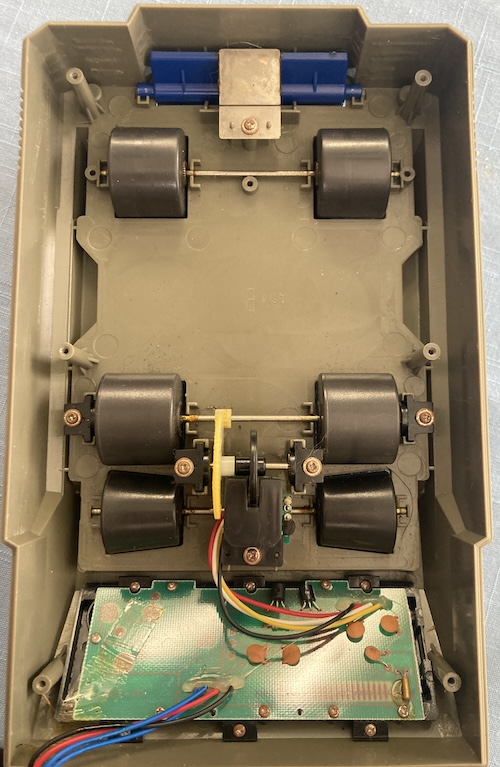
The way that this Speed Checker works is by spinning the big gear, which in turn spins a toothed wheel in a photo-sensor. When a hole in the wheel is passing past the photosensor, the microcontroller can read that as a positive signal. If you read that signal often enough, you have a pretty good idea of how fast the wheel is turning.
A similar design is present in old ball computer mice. There’s a big limitation here, of course, in that you can only sense speeds as fast as the computer is able to look at them. I know from watching “no-rules time attack JCJC” videos that this thing tops out at about 80 kilometers per hour, which is probably spinning this little wheel so fast that the microcontroller is not able to detect a clean separation between “hole” and “not hole” (aliasing) and instead freaks out a little bit.
To help maintain the integrity of the Speed Checker, I put a little bit of Cera-Grease HG on the big gear, spun it a bit by hand, and called it a day.
I hope you enjoyed this journey into checking speed. I am looking forward to doing a bunch of experiments on various techniques for modern straight-line speed, using this instrument as a judge.
